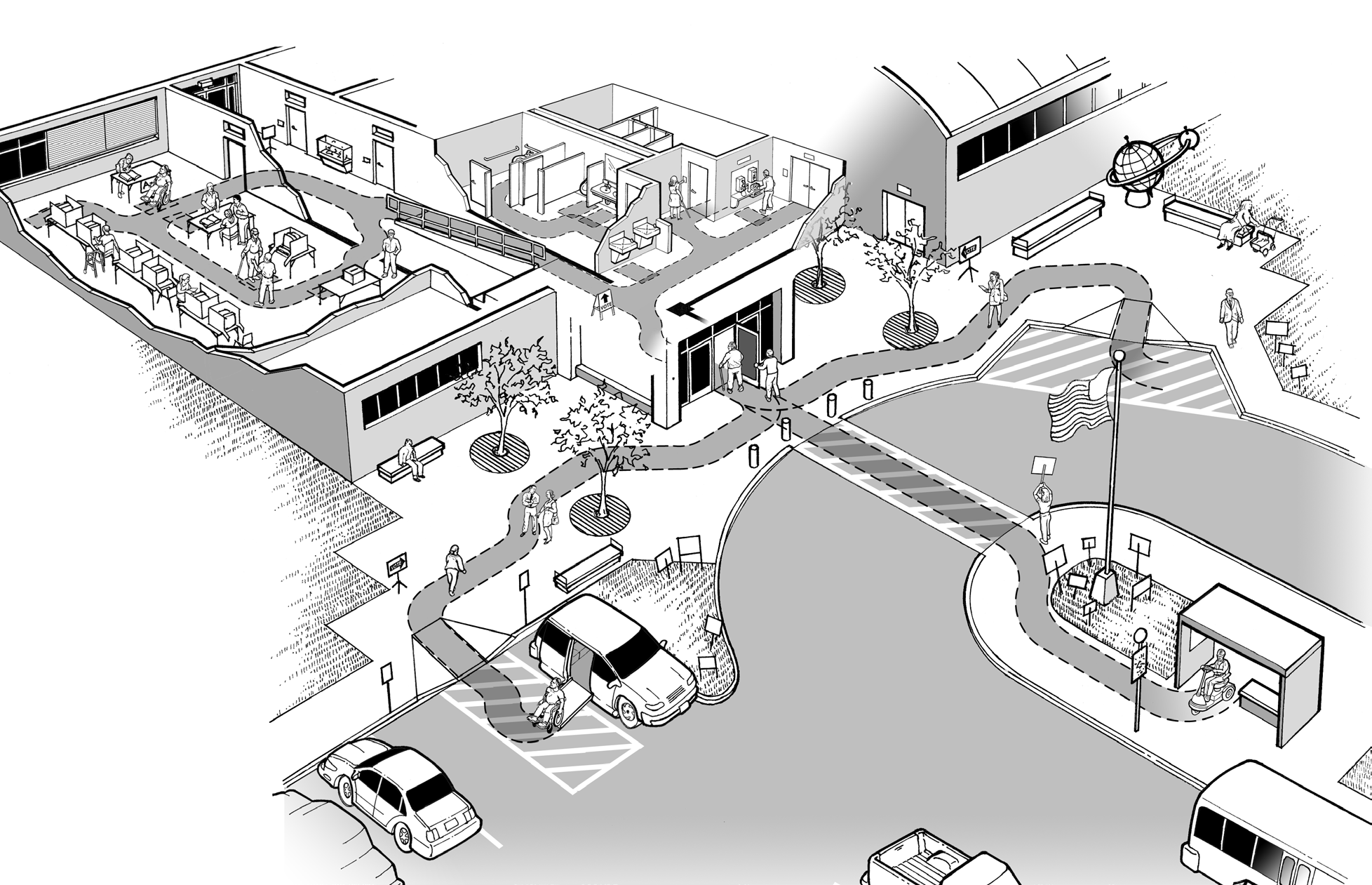Accessible Routes (Exterior and Interior)
Once a voter with a disability arrives at the polling site, there must be an accessible route from the accessible parking, passenger drop-off sites, sidewalks and walkways, and public transportation stops to get to the entrance of the voting facility. The accessible route must be at least 36 inches wide. It may narrow briefly to 32 inches wide, but only for a distance of up to 24 inches. (See Part 2 of this document for tips on taking measurements.) Whenever possible, the accessible route must be the same as or near the general circulation path (i.e., the path for general pedestrian use).
Inside the polling place, there must be an accessible route from the entrance through hallways, corridors, and interior rooms leading to the voting area. The route must be free of abrupt changes in level, steps, high thresholds, or steeply sloped walkways. The accessible route is essential for people who have difficulty walking or who use wheelchairs or other mobility devices to get into the polling place and to the voting area. Where an accessible route is different from the general circulation path, signs will be needed to direct voters with disabilities to the accessible route and to the voting area.
Route requirements are in Sections C and E of the 2016 Checklist found in Part 3 of this document.
Accessible routes to and within the polling place
Problem One: The sidewalk connecting parking to the polling place entrance is too steep to be accessible.
Solution: Check to see if there is another sidewalk that provides an accessible route to the accessible entrance. Sometimes there is a less direct route that can serve as the accessible route. If no accessible route can be found from the current designated accessible parking, relocate the accessible parking using traffic
cones and signs to an area where there is an accessible route to the entrance.
Problem Two: The accessible route crosses a curb and no curb ramp is provided.
Solution: Install a portable ramp.
Problem Three: One or two steps are part of the walkway leading to the accessible entrance.
Solution: Install a portable ramp.
Problem Four: The interior hallway leading to the voting area contains a set of stairs that cannot be ramped.
Solution: If the accessible route cannot be relocated, look for another area where voting may be provided. For example, if the stage in a school auditorium used for voting is up several steps, perhaps the hallway or lobby area may be accessible and used for voting instead of the stage. Or, if a church basement located down a flight of stairs is used as the voting area, perhaps one of the ground floor rooms could be used as the voting area. If it is impossible to relocate the voting area for all voters, find a location for an accessible voting station that offers the same privacy as the other voting area.


User Comments/Questions
Add Comment/Question